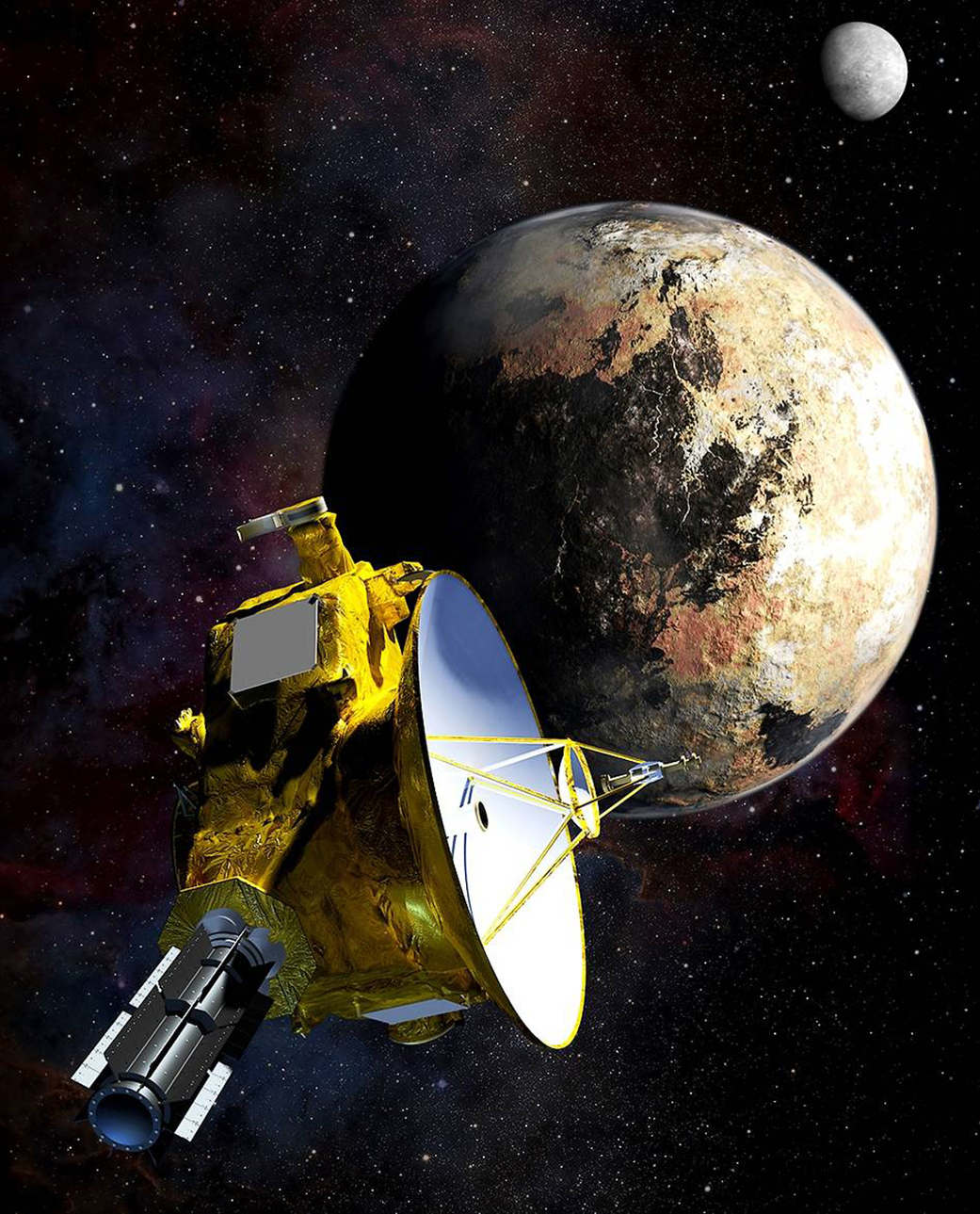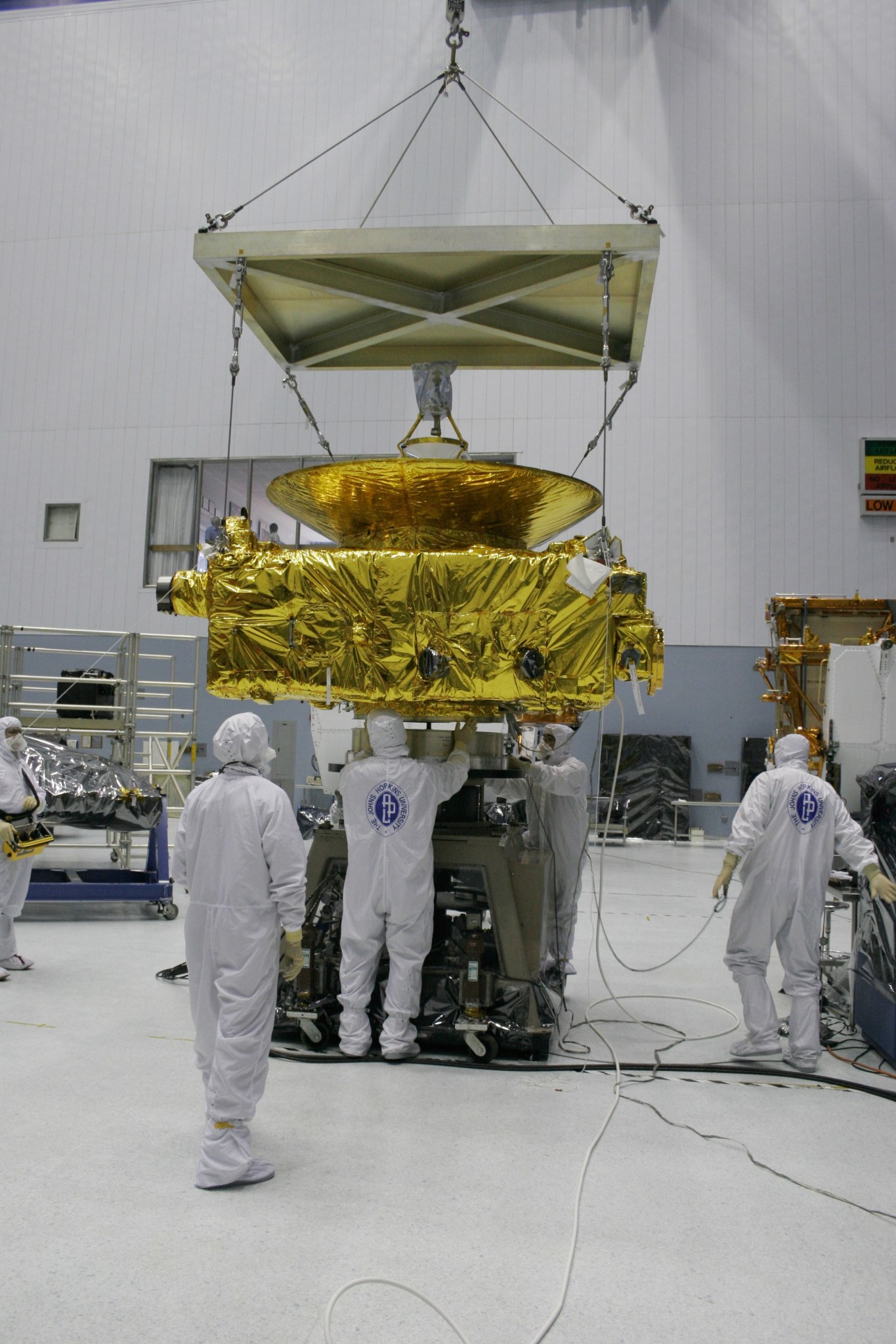
Three billion miles of space travel and 26 years of careful planning and execution ago, New Horizons Principal Investigator Alan Stern, now of the Southwest Research Institute in Boulder, Colorado, gave his first talk about a theoretical mission to Pluto at the weekly science symposium at NASA’s Goddard Space Flight Center in Greenbelt, Maryland.
“I remember thinking it was a wild idea,” said New Horizons Co-Investigator Don Jennings, of Goddard, who attended that talk in May of 1989. “But it got me to pay attention.”
Goddard scientists and engineers played a large role throughout the extended process of conceptualizing, developing and testing the New Horizons mission, which flew by the dwarf planet on Tuesday, July 14 after a nine-and-a-half-year flight.
“In a real sense this all got its start at Goddard,” Stern said.
Scientists here also developed the Linear Etalon Imaging Spectral Array (LEISA) component of the Ralph instrument. Ralph/LEISA is an infrared camera designed to identify and map the composition of Pluto and its moons.
Ralph, the main eyes of New Horizons, will use two components for mapping – the Multispectral Visible Imaging Camera (Ralph/MVIC) and LEISA. MVIC will make maps in both visible and near infrared light, while LEISA will map strictly in near infrared. Near infrared light waves are slightly longer than what humans can see. The instrument took images as it approached, flew by and looked back at Pluto. The best images from this instrument will begin arriving in the early fall, according to Goddard’s Dennis Reuter, the Ralph Instrument Project Scientist
“The goal of the mission is to understand what the Pluto system is made of, how it evolved and what processes are going on now,” Reuter, who was also a co-investigator for the mission, said. “To do that you need to have good, high-resolution black-and-white and color images and infrared maps. These allow the science team to link what the surface is made of, what’s happened on the surface, and what’s happening there now. Ralph provides this capability.”
In addition to developing LEISA, Goddard performed the acoustic, spin balance and thermal vacuum testing on the spacecraft to prepare it for the rigors of spaceflight.
The National Academy of Science has kept the exploration of Pluto and other Kuiper belt objects as a top priority for NASA because their pristine nature could reveal clues about the ancient solar system. Taking high-definition color photos of the small bodies is an essential part of this goal so scientists can study them in detail.
LEISA itself has a very simple design, Reuter said. It uses an ultra-light spectrometer — roughly one square centimeter — to split up light waves and identify the composition of the materials it’s studying. Every material absorbs and reemits different wavelengths of light, which LEISA is able to recognize. Reuter and Jennings developed the technology for the spectrometer in 1992 for a NASA Advanced Technology Insertion competition, in which people were proposing instruments for Pluto missions. The other component of LEISA is a detector, which reads what the spectrometer is taking in.
Lightweight instruments were essential to the New Horizons spacecraft because it is the fastest mission NASA has ever launched out of Earth, shooting through space at roughly 36,000 miles per hour. The grand piano-sized spacecraft approached Pluto at about 31,000 miles per hour. The entire Ralph instrument is roughly the size of a hatbox.
The LEISA spectrometer flying on Ralph is made of sapphire with several hundred super-thin layers of different materials on top. These layers give the spectrometer the power to spread out the light coming in, the same way a prism does. It will look at all parts of Pluto and its moons that the sun illuminates, mapping the amounts of nitrogen, methane, carbon monoxide, frozen water and other materials, including organic compounds. It will also map surface temperatures. MVIC will look at the sun-lit parts of the bodies, but additionally map the night side of Pluto, which is illuminated by “Charon light.” Charon light is light reflected from Charon onto the dwarf planet.
“[LEISA and MVIC] are completely integral to doing the mission,” Stern said. “Ralph is all over the exploration objectives, maybe more than any other single instrument.”
As they study the surfaces of the different bodies, LEISA and MVIC complement the rest of the mission’s instruments in different ways as well. Alice, the UV spectrometer, for example, looks at the atmosphere, which has molecules coming from the surface. LORRI (Long Range Reconnaissance Imager), the high-resolution camera, will help scientists connect the geology of the bodies with the composition. The Solar Wind At Pluto (SWAP) instrument will look at solar wind interactions with the atmospheres of Charon and Pluto. The Pluto Energetic Particle Spectrometer Science Investigation (PEPSSI) will measure the escape of molecules from Pluto’s atmosphere and REX (Radio Science Experiment) will investigate the structure of the atmosphere and the temperature of the surface. The data from these instruments, when combined with the Ralph data, will provide a comprehensive picture of the Pluto system.
“It is very exciting to be part of this adventure,” Jennings said. “Of course, all of us are part of it. Everyone gets to see Pluto almost as soon as the images reach Earth. And it’s hard to believe that something I helped build is doing its job 3 billion miles away.”
For more information about New Horizons, visit:
Elaine Hunt
NASA’s Goddard Space Flight Center, Greenbelt, Md.




























